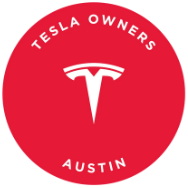The recently released Tesla charging adapter by Ford has been making waves in the electric vehicle community. With Ford shipping out 140,000 complimentary adapters to its electric vehicle customers in the U.S., the company has been showcasing the durability and toughness of the adapter in a dramatic video. The video features the F-150 Lightning driving over the adapter, which emerged seemingly unscathed.
The North American Charging System (NACS) to Combined Charging System (CCS) adapter was co-developed by Ford and EV accessory maker Lectron. This adapter allows drivers to charge at thousands of Tesla Superchargers in the U.S. Initially provided for free to customers, the adapter is now available for purchase at $200. However, tariffs may make it more expensive.
Lectron, the engineering firm behind the adapter, has provided insights into the rigorous testing and engineering that went into ensuring the adapter can withstand high voltage and current loads without breaking. According to Christopher Maiwald, the CEO and founder of Lectron, the focus was on optimizing durability above and beyond what is typically seen in aftermarket products.
The Vortex adapter by Lectron, which allows EVs with a CCS port to charge at Tesla Superchargers, faced some challenges early on. An initial batch of adapters was recalled due to issues with the Supercharger cable snapping out from the adapter during DC fast charging. This posed a safety hazard as disconnecting a DC fast-charging cable mid-session could expose users to damaged pins and hot connectors.
Lectron addressed this issue with a fix that prevents the cable from detaching unless the charging session is ended from the car or by pressing the button on the Tesla cable. Despite the early struggles, the collaboration between Ford and Lectron demonstrates the level of effort and innovation that went into developing this adapter. With added redundancies and design changes, the adapter offers a reliable and safe charging solution for electric vehicle owners.
Despite being a seemingly simple passive device, the engineering behind the Ford Tesla NACS adapter was anything but straightforward. The connector that fits into the CCS charging port had to be designed with precision, with a thicker pin and an interlocking mechanism to ensure a secure connection during charging. This required extensive testing, including extreme drop tests and IP67 waterproofing standards.
One of the challenges faced by the engineers at Lectron was designing a seal that could move with the interlock mechanism without compromising the waterproofing of the system. This meant ensuring that the seal could withstand repeated movements without allowing water to seep in, a feat that required careful engineering and testing.
Ford put the adapter through its paces with a series of rigorous tests, including freezing it to -40 degrees Celsius, dropping it from height, and running it over with the 6,000-pound F-150 Lightning. Despite the punishing tests, the adapter remained intact and functional, a testament to the quality and durability of the engineering behind it.
It’s important to note that using certified, manufacturer-recommended EV accessories like the Ford Tesla NACS adapter is essential for ensuring safety and compatibility with your electric vehicle. Cheaper, low-quality adapters may not meet safety standards and could pose a risk to both the vehicle and the user. Investing in a high-quality adapter from a reputable manufacturer is a small price to pay for the peace of mind it provides.
Overall, the engineering behind the Ford Tesla NACS adapter showcases the level of detail and precision that goes into even seemingly simple devices. It’s a reminder that even passive components play a crucial role in the functioning and safety of electric vehicles, and that quality and reliability should always be top priorities in their design and manufacture.

